
hawaii promotion committee : hawaii, 1916
| home | catalogue | history | references | appendix |
 |
surfresearch.com.au
hawaii promotion committee : hawaii, 1916 |
PARADISE OF THE SPORTSMAN
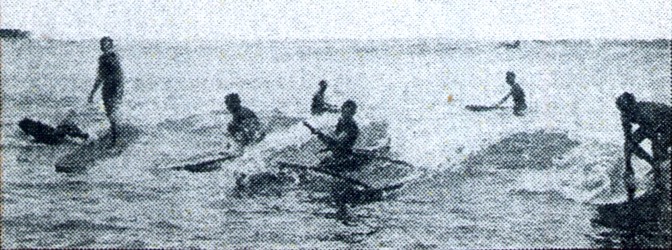
SURFING
Page b
ands have become a recognized rendezvous for mainland game fishermen who have made world's record catches of tuna, ulua, dolphins and swordfish, and fishing headquarters have been established at Kihei, Maui, others on Hawaii, Kauai and Oahu.
Yachting
and aquatic sports can be indulged in all the year around.
Under the
auspices of the Hawaii Yacht Club, three noted trans-Pacific
yacht races have been sailed, which brought much favorable
publicity to the islands.
In addition
to several boat clubs, a number of rowing organizations and
the Outrigger Canoe Club have a large membership.
A great and
distinctively Hawaiian sport is surf-riding, either with a
board or a canoe.
It is one of
the principal attractions at Waikiki Beach, Honolulu.

"ON THE
BEACH AT WAIKIKI."
Access to
many off-shore fishing banks, reefs, shoals and channels,
located close to all the islands, has been made by power
sampans which may be secured at Honolulu and other principal
seaports.
Shark
hunting is much exploited in Hawaii and only requires a
power boat, a party of tourists and a harpooner to make up
an afternoon of exciting sport.
The
Territory of Hawaii boasts of many athletic organizations.
It has
turned out some of the world's best swimmers, chief among
whom is Duke P. Kahanamoku.
Honolulu and
Hilo have large infiuential country clubs.
Golf,
tennis, baseball and polo, and a host of out door games are
played, throughout the year.
Travelers,
whose hobby is golf, have opportunity to play every month of
the year on many superb links.
The Oahu
Country Club of Honolulu has a splendid 18-hole course.
The Moanalua
Garden links and those at the Haleiwa Hotel, are always
popular.
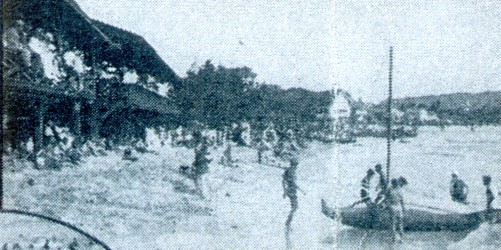 OUTRIGGER CLUB |
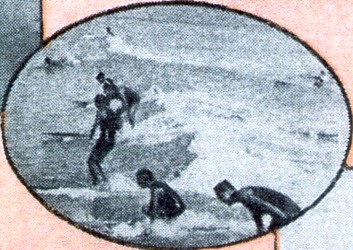 [cropped and untitled] |
Page c
Surfing
adepts take a long pointed board, giving to it the necessary
forward motion to enable the inrushing wave to bear it
shoreward on the crest.
Often the
rider will stand upon this slight support.
The entire
beach at Waikiki is enclosed by a great barrier reef of
coral which effectually guards the bathers from possible
intrusion of sharks, which are never seen in the lagoons.
There has
never been a casualty from sea monsters on or near any of
the bathing beaches about Hawaii.
The famous
song "On' the Beach at Waikiki" was composed to describe the
allurements of this wonderful coral sand stretch.
Adjacent to the bathing beaches are many of the fashionable hotels, frequented by the army and navy, and the local and foreign elite.
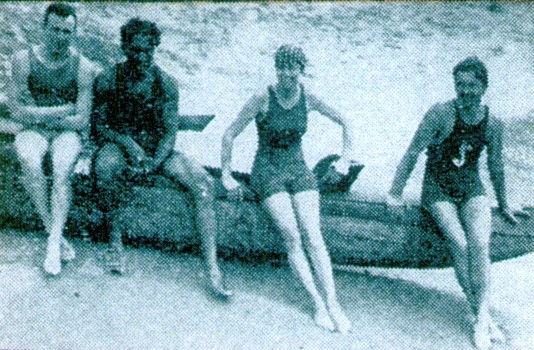 |
Second
from the left, |
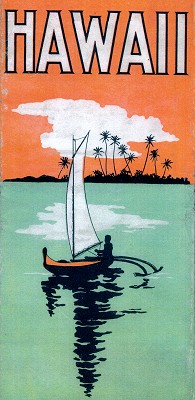 |
Hawaii. Honolulu, [1916]. |

| home | catalogue | history | references | appendix |